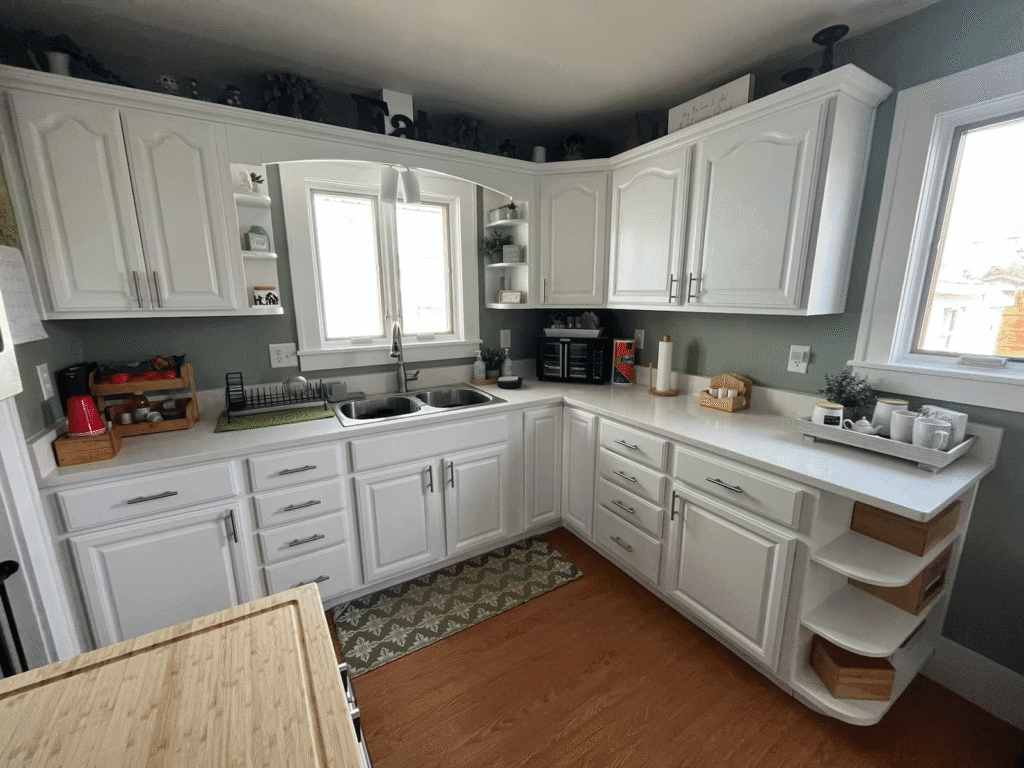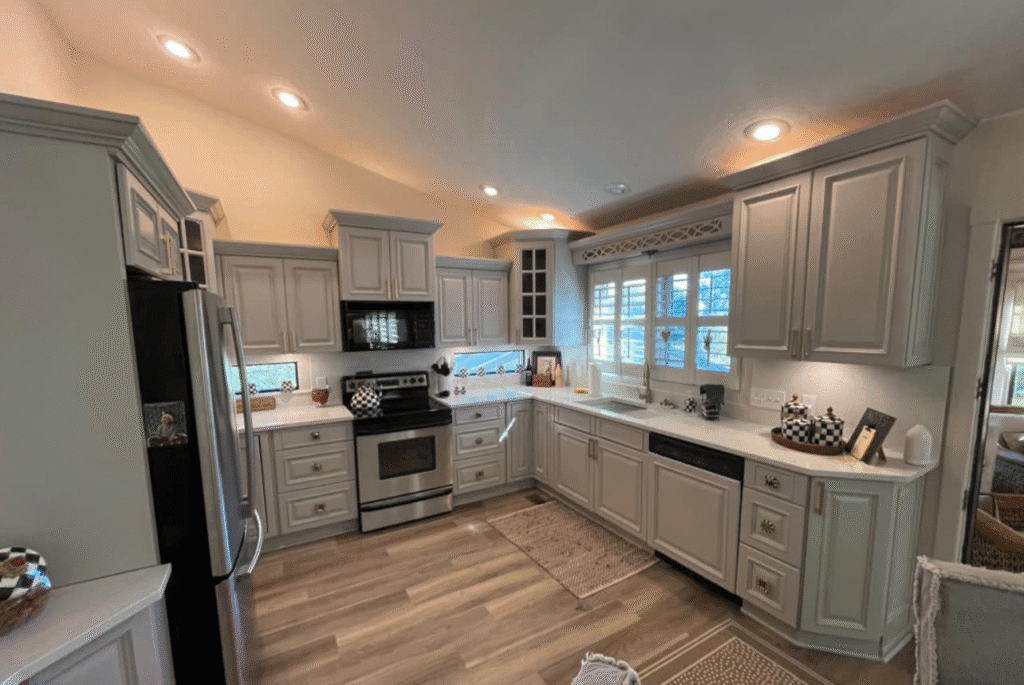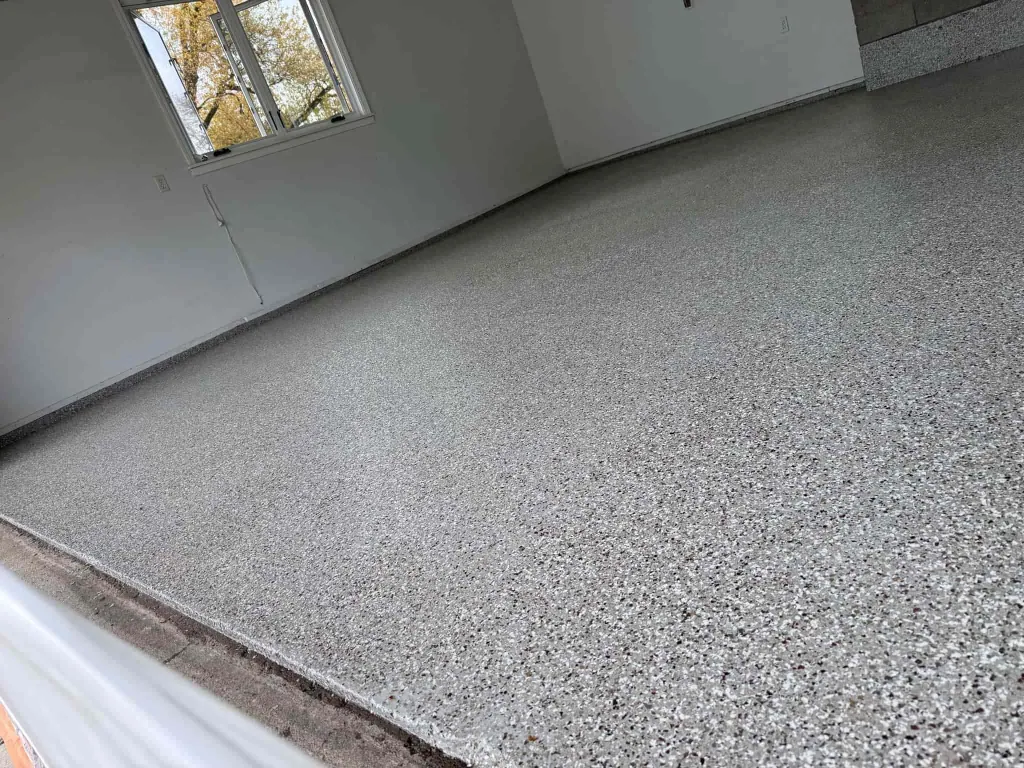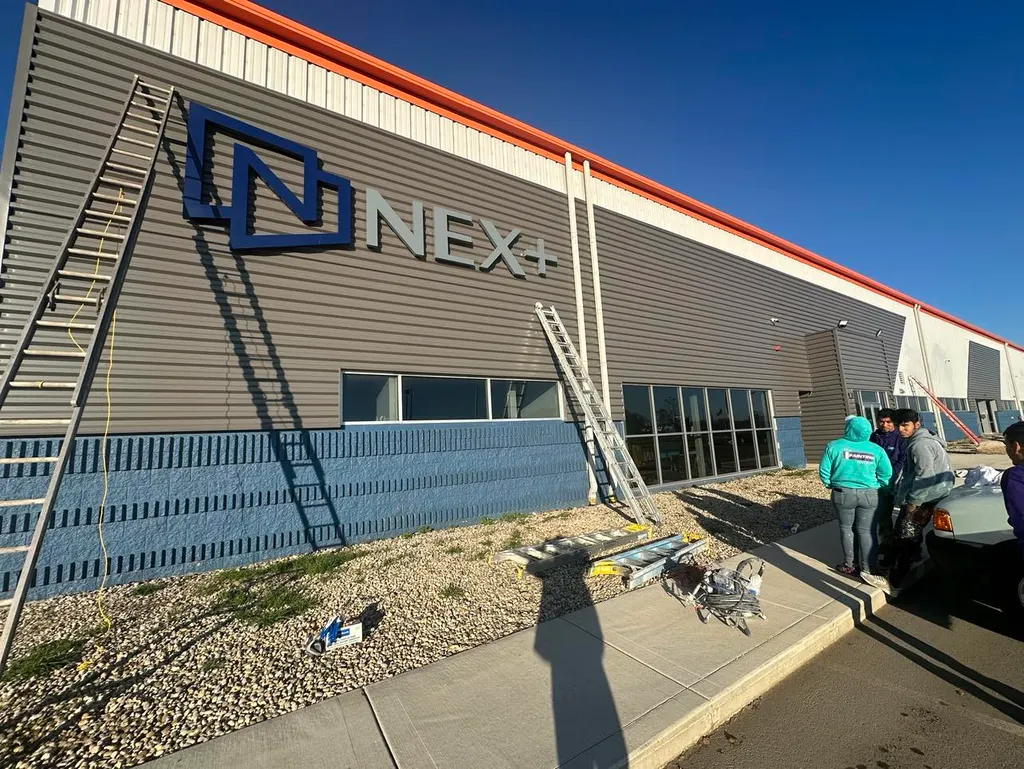If you are planning for a kitchen makeover, one of the arising questions may be; how much does it cost to paint kitchen cabinets – that single question keeps many remodel dreams on hold. You’re trying to paint on a budget, yet you still want to paint kitchen cabinets that look showroom-new. The answer depends on many moving parts: the style of cabinet painting you choose, the size of your kitchen cabinets, even how many cabinet doors swing open every day.
Add in line items like cabinet painting cost or the price of extra drop cloths, and the math can feel dizzying. Don’t worry; the numbers below bring calm to the chaos.
Cabinet Painting 101: Core Cost Drivers
Before real dollars show up on an estimate, you need to know what actually determines the exact cost of painting kitchen cabinets.
- Square foot pricing sounds simple, but kitchens contain nooks, crannies, and islands that skew totals.
- The number of parts involved in painting cabinets adds time and material.
- Ask about cabinet painting worth because fresh color often boosts resale more than the fee itself.
- Location matters; some contractors list a cost to paint kitchen based on local demand and overhead.
- Swapping outdated pulls and hinges can help save money on your cabinet hardware, refreshing looks without new woodwork.
Tally these factors against your own cabinets and their visible cabinet surfaces. You’ll see why two identical houses can land at different final totals.
Material & Surface Variables That Influence the Cost to Paint Kitchen Cabinets
The exact cost to paint kitchen cabinets shifts once materials enter the chat.
Many existing cabinets are hardwood, but some hide MDF or laminate skins. Each choice controls paint costs because primers and fillers change. Flaking edges or peeling paint also raise prep time; remember that every layer of existing paint tells a story. If pros find old paint loaded with lead, disposal climbs.
Door style matters, too. Slab fronts cost less than raised-panel drawer fronts because there’s less groove sanding. Even color changes play a role. Dark-to-light transitions increase cost to paint since they may need one or two coats of specialty sealer first.
Sure, bold DIY dreams tempt many into weekend DIY projects, yet hidden “gotchas” often create unexpected additional costs.
Labor, Prep, and Professional Fees: Cabinet Painting Cost Demystified
Wondering why kitchen cabinet painting cost sometimes shocks homeowners? The biggest bill is labor costs, and this depends on the skills and success rate based on previous projects.
Counting Doors by Linear Foot
Estimators measure the running length of cabinet faces to price a job. Doors, frames, and crown profiles all join the math, shaping the final bill. This per-foot approach feels fair because it mirrors the true size of the project, not just a random number.
A long island packed with pull-out trays will carry a bigger tally than a small pantry tower. Using length as the base also keeps quotes clear when you add or delete a section mid-plan.
Value of Professional Painters
Licensed crews handle dismantling, cleaning, and setup. Their speed shrinks kitchen downtime, and warranties protect you long term.
Seasoned experts also spot trouble signs like moisture in door rails before color goes on. They own specialized sprayers that level finish in a single pass, something rental gear rarely matches. Factor in cleanup, and you’ll find the extra fee buys back both weekends and peace of mind.

Winning at Surface Preparation
Quality starts with sanding, caulking, and taping. Skilled teams tame uneven surfaces so finish coats glide on for superior durability. Proper prep removes grease, dust, and tiny burrs that cause tacky film later.
Every minute spent smoothing edges saves an hour of sanding between color layers. The result is a finish that feels like glass and resists chipping when doors slam.
Fewer Swipes, Fewer Coats
High-build primers mean fewer coats of color. Less paint equals less cash and quicker turnaround. That primer builds thickness fast, hiding minor dings without extra layers of topcoat.
Because coverage improves, the final film stays thinner and cures harder. Homeowners spend less time clearing the kitchen for repeat visits.
Matching the Kitchen Layout
A sprawling peninsula challenges airflow and staging. Tight galley rooms complicate spraying. Painters might need extra plastic walls to control overspray in open-concept homes.
Conversely, compact spaces force them to set up smaller gear and shift ladders more often. These hurdles translate into billable hours that show up on the estimate.
Hidden & Additional Costs: Hardware, Sheen Choices, and More
Sticker shock usually comes from extras that hide between line items. A short look at those sneaky add-ons shields your wallet before the paint can pops open.
- Extra prep work like full degreasing adds crew hours and cleaning agents.
- Repairing wear on old cabinets sometimes demands backing panels or toe-kick replacements plus fresh wood filler and masking tape for crisp edges.
- Homeowners who start DIY and later decide to hire professionals pay for rescue labor as well as missed production time.
- Swapping tired boxes for new cabinets sounds tempting, but a similar professional finish via paint still costs far less.
- Specialty paint type upgrades, wider room square footage, and any last-minute trim ideas can turn a modest quote into a more significant investment.
These line items climb fast, yet they keep the job clean, durable, and worth every penny.
Is Cabinet Painting Worth It? ROI & Cost Effective Alternatives
A glossy face-lift sometimes brings a smooth finish that rivals a full renovation at a fraction of the bill. Retaining the existing color to unify a space still delivers a consistent finish without a high cost hit.
Yes, stripping layers feels labor intensive, but combining filler, primer, and new hardware often beats paying for factory boxes. Needing more coats on battered cabinets will raise cost, though the right materials and supplies scale to any kitchen size.
When painters fit new doors and matching hardware, the answer to “much does it cost?” rings loud. The short version is simple: the project cost usually lands far below full replacement.
FAQs About the Cost to Paint Kitchen Cabinets
Still weighing the numbers? The quick questions below clear up the most common cost myths in seconds.
Q1. Will a quote include every professional supply?
A full proposal from a professional crew almost always itemizes every tape roll, primer gallon, and finish coat. This clarity stops surprise fees from popping up mid-project.
Q2. Does cabinet shape affect cost?
Shape, height, and run length of walls can change how crews paint kitchen cabinets. More angles usually need extra masking, which nudges the estimate upward.
Q3. Will frameless cabinetry cost more?
Frameless or Euro-style cabinetry often takes longer to mask because interior boxes stay exposed. Extra labor translates into a slightly higher price tag.
Q4. Is extra sanding always included?
Most homeowners worry that every minute of sanding will drain their money. Good news: crews often roll that step into the base rate, especially when they apply the best kitchen cabinet paint that needs a scratch-free base.
Q5. Will laminate or a DIY start change price?
Jumping into a DIY attempt may sound cheap, yet fixing errors later can rival the price of replacing the doors outright. Rolling with low-grade brushes usually leaves strokes that require extra cleaning before repaint. Working on laminate also means more primer coats so the finish sticks and levels.
Ready for Real Numbers?
Skip the guesswork. Call The Painting Group at (765) 553-4203 or stop by 17 S. 6th St., Lafayette, IN 47901. The family team will size up your space, detail every line item, and keep your kitchen shining for years.




